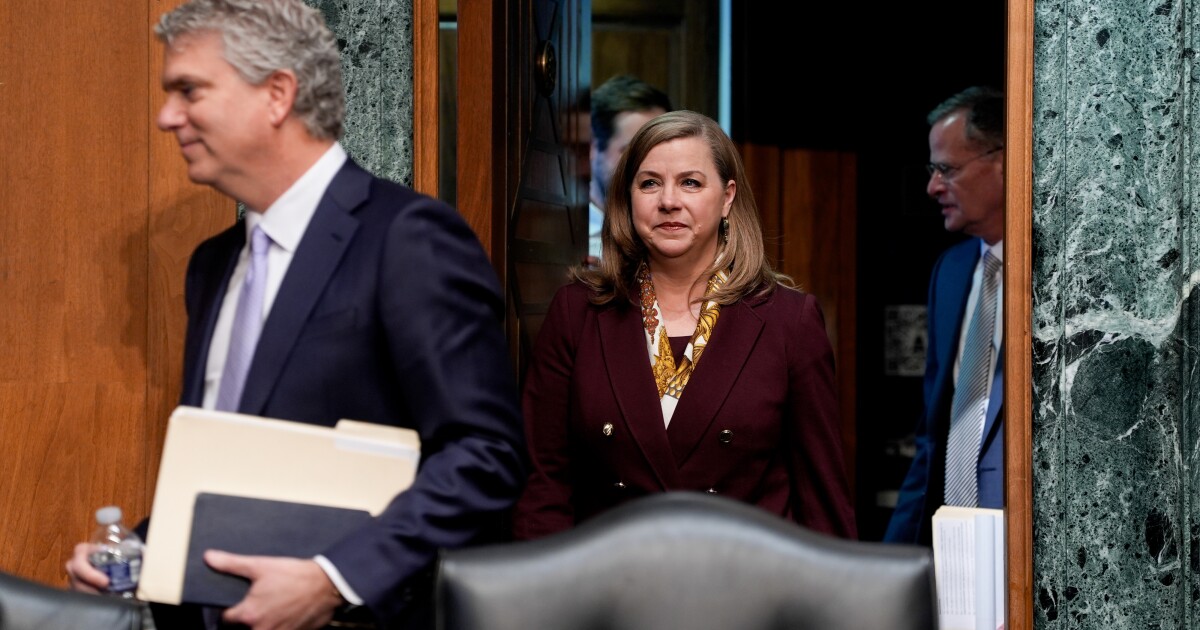
The Federal Reserve announcement about
"This is big news, We've been waiting for almost two years to say that they've concluded this rate hiking cycle," said Melissa Cohn, regional vice president, William Raveis Mortgage. "I think that we finally got as close to hearing that as we're going to get until the Fed announces their first rate cut."
But many lenders are tempering their expectations, in part because Chairman Powell has made it clear
"Reduction in the short term rates often leads to a reduction in long term rates as well but sometimes that's not the case when they become decoupled," said Marty Green, attorney at Polunsky Beitel Green.
While the fed funds rate is less directly correlated with most home-loan rates it still holds sway over market expectations that drive long-term financing costs, so the net impact of the two right now suggests rates will
"The longer-term outlook is that rates will stabilize and come back down," Green said.
The Fed could undergo another pivot in response to movements in the economic indicators it is constantly assessing, but at the time of this writing there were strong signals that some of the concerns
Wide spreads between mortgages and benchmark Treasury bonds have narrowed to some degree, at least for older vintages.
"There's prepayment risk now for 30-year 5.5s and 6s, but all the lower coupons the Fed actually owns, those tightened dramatically," said Walt Schmidt, senior vice president, mortgage strategies, FHN Financial.
While the average 30-year mortgage rate in the primary market for consumers was 6.95% this week for loans bought by government-related investor Freddie Mac, rate-indicative MBS yields are typically lower because lenders build in a spread to account for their costs.
And while
"We're looking for the curve to steepen. Obviously, the moves to the last couple of days have not done that with the 10-year down more than we anticipated, but the general thesis still holds," said Bose George, managing director, Keefe, Bruyette & Woods.
That could be helpful to depositories.
"Banks' cost of funds on the short end are more expensive than their lending at the long end and when it normalizes mortgage rates will just come down naturally, even if bond yields remain where they are today," Cohn said.
It all sounds like it would suggest borrowers should potentially hold out and wait for lower financing costs but as previously mentioned, some will have a reason to refinance before others, depending on what the rate of their existing mortgage is.
"For people who purchased after September of 2022 this is great news," said Jennifer Beeston, senior vice president, mortgage lending at Guaranteed Rate.
However, the bulk of the current market got mortgages at relatively lower rates so it could take an extended drop before many borrowers have an incentive to refinance.
"I think it is unlikely we will see interest rates below 5% by the end of next year and in order to have significant refinance activity that benefits the borrower you will need to be 5% or lower," Beeston said.
While this may limit origination gains, it also could keep publicly traded mortgage companies with strong servicing operations relatively healthy by limiting their prepayment risk.
The juxtaposition of the record stock market rally that followed the Fed's announcement with that risk raises questions about how well publicly traded mortgage firms with servicing operations will fare.
Servicers may still have better prospects than originators at this point as their businesses have been doing better in the higher rate environment recently and many of them do have origination units that serve as a natural hedge in addition to other forms of risk management, George said.
Also, new originations can help a servicer replenish portfolio runoff, he added.
In cases where mortgage companies have financial hedges and didn't anticipate the Fed's move, it could have a downside if they take related losses, said Peter Nowicki, senior vice president, futures sales and trading, Wedbush Securities.
"This move here, it's definitely taken some of those people by surprise," he said.
Nowicki, a former Federal Reserve Bank of New York capital markets analyst and trader, said the move surprised him given the relative strength in recent U.S. indicators. He speculated it could be due to global tensions that could affect the economy or the approaching election.
In general, the move may be an indication Fed policy is getting a little more unpredictable, something that could also result from some of the shakeup affecting the board's composition, Nowicki added.
So lenders, originators and consumers may not want to count too much on further declines in rates. Even if they do continue, lenders warn there are other considerations related to the supply and demand conditions in the housing market that could be impacted.
Right now the slow winter season has quelled some of the competition for limited housing supply in the market, and if rates do fall further demand could pick up, so there are some reasons borrowers may not want to wait to buy.
However, Cohn warns that while mortgage rates generally saw a relatively pronounced drop Wednesday, some financial institutions haven't lowered theirs yet. So mortgage applicants may want to shop around if they're looking to act now.
"Some banks are saving their gunpowder for next year, other banks are jumping in and dropping their rates right away," she said.
It would likely take a drop in the average mortgage rate to 6.5% to expose a significant number of recent borrowers to refi incentives that could have an impact on the supply-demand balance, according to Jack Macdowell, chief investment officer, The Palisades Group.
Rates would have to drop another 100 basis points to be deep enough to get homeowners with older, lower-rate mortgages to make the kind of moves that could free up existing-home inventory that's been scarce in the market, he said.
"In that environment, you could see supply-demand parity come back to the market, which would be great. I also think in some markets, you could see a reverse of what we see today, where we have too much supply relative to demand," Macdowell said.
Most lenders are not anticipating rates will be that low any time soon.
"This is the beginning of mortgage rates beginning to slowly decline through 2024. However, we don't expect rates to fall that much," said Max Slysarchuck, CEO, A&D Mortgage



